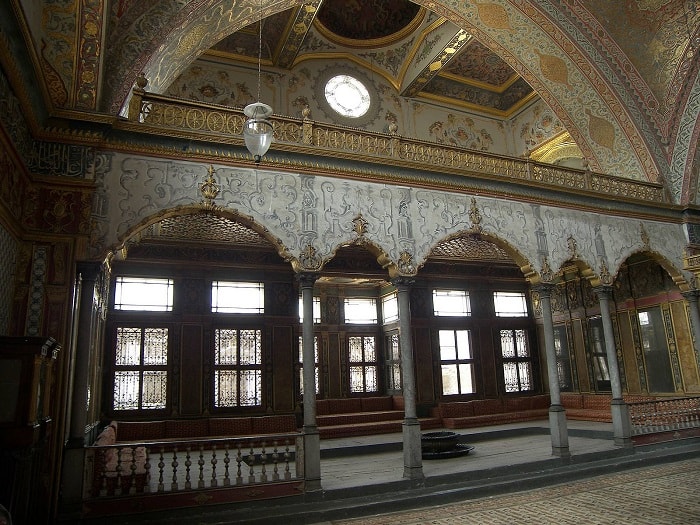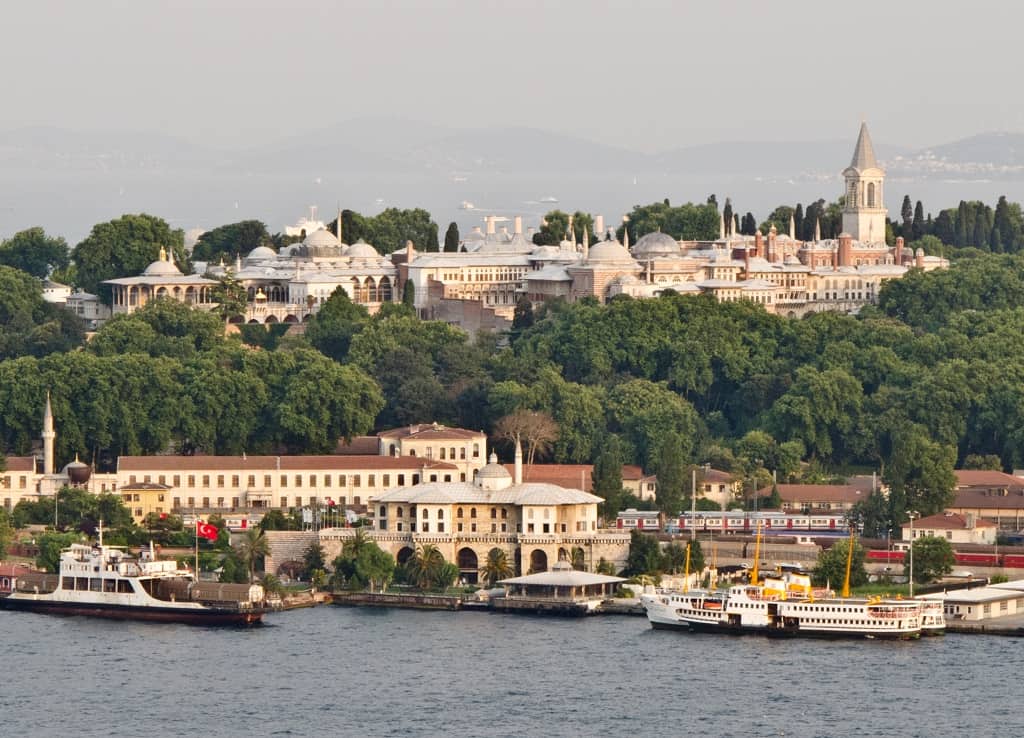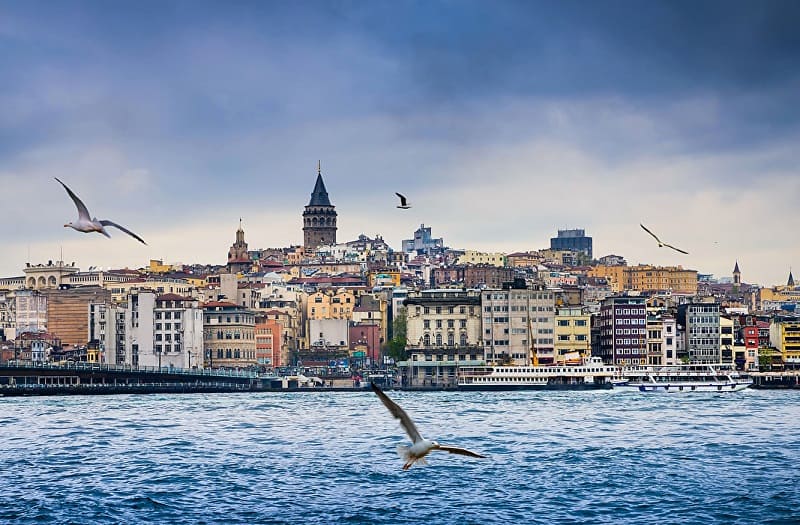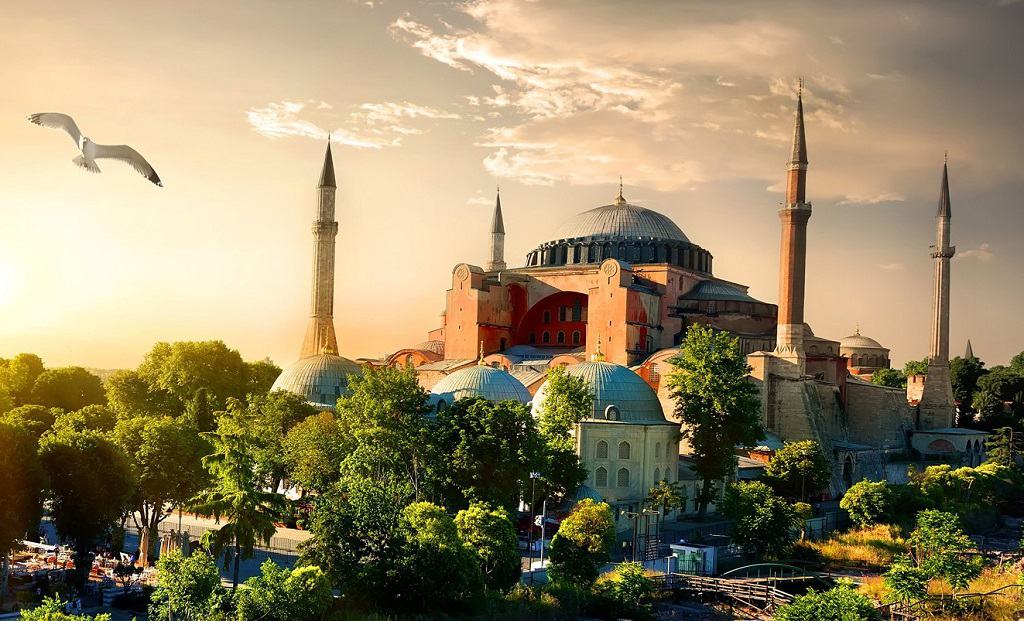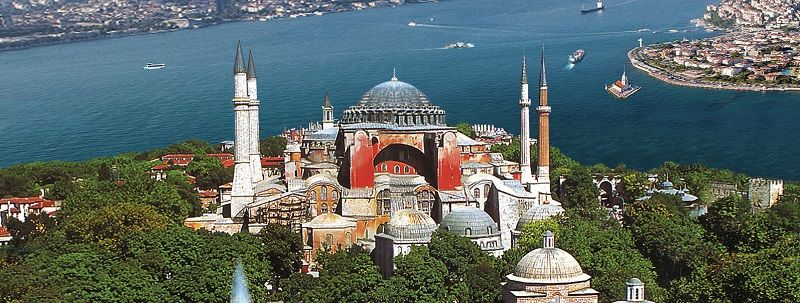Topkapi Palace; Opening Hours, Entrance Fee, Transportation
Opening Hours and Entry Fees
Opening hours; 09:00-17:00, closed on Tuesdays.
- Entrance fees for foreing visitors; combined tickets (Palace+ Harem + Hagia Irini); 950 TRY. Topkapi Palace + Hagia Irini; 750 TRY. Harem only; 350 TRY
- Discounted prices for foreing visitors; children between 0-6 years; free of charge. Students (students, children etc); 50 TL for the palace and 35 TL for Harem. Students up to 25 years old; combined tickets (Palace+ Harem + Hagia Irini); 100 TRY. Topkapi Palace + Hagia Irini; 120 TRY. Harem only; 60 TRY
Planing Your Trip
Topkapi Palace is one of the “must see” historical and touristic sites in Istanbul. It is recommended to visit the palace accompanied with a professional guide and spend at least 2-3 hours inside.
Transportation / How To Go
How To Go To Topkapi Palace; Topkapi Palace is located in Sultanahmet district, in the old town area (historical peninsula) of Istanbul. Istanbul is founded on two continents and Sultanahmet is on the European side.
You can go to Sultanahmet Square by using metro or tram. Take “T1 tram line” and walk 2 minutes from Sultanahmet Station. Or take Marmaray Metro line and walk 10-15 minutes from Sirkeci Metro Station. There is no any public bus passing by the Topkapi Palace. If you to take a taxi and use the coastal road (through Cankurtaran district) you can get out somewhere near to the main door of the palace (by the way you may face traffic jam in the mornings).
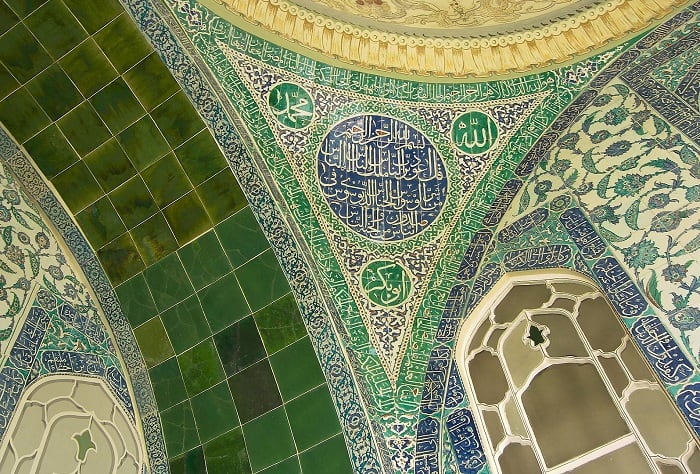
History
Topkapi Palace is the second but the largest complex which was built by the Ottoman in Istanbul. The construction of the palace started in 1453, 7 years after the conquest of Constantinopolis by Mehmet The Conqueror (Fatih Sultan Mehmet). The first palace which was built of timber in Beyazit district, had a fire and the construction of the Topkapi Palace was started. For this reason, originally the name of the palace was “The New Imperial Palace” (Saray-ı Cedid-i Amire) during Ottoman era. The land where Topkapi Palace was founded is the area where the city of Byzantion was first founded. The outer walls of Topkapi Palace were also built over the ruined walls of the Byzantion. As a result it is very symbolic and meaningful to choose the same land where Byzantium, Roman, East Roman and Byzantine palaces were in and around.
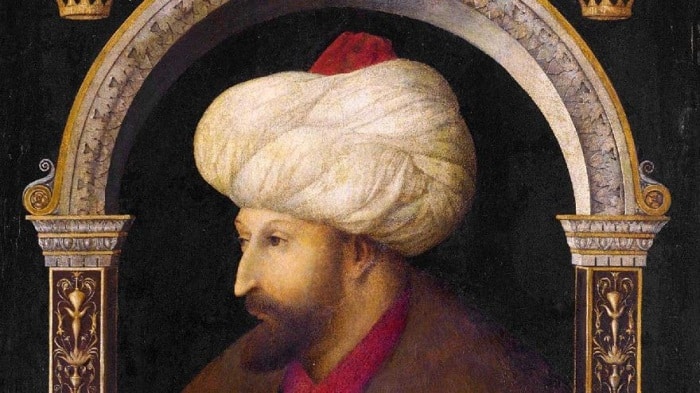
The palace was built on an area of 700.000 m2 together with an extensive garden surrounding. The palace has 380 rooms in total. 20% of the total land consists of palacial buildings. Today the museum area is 80,000 m2 (for those who want to compare, Versailles Palace is 67,000 m2, 2300 rooms). However, architecturally the palacial buildings are not so magnificent as many people thinks or expects. Actually the magnificence of Topkapi Palace comes from its location, function, it’s museum and interior decorations.
Topkapi Palace was used as the first imperial palace until Dolmabahce Palace was built in baraque style. The Ottoman dynasty moved to Dolmabahçe Palace in 1856 and Topkapı Palace has been used as a museum since 1924.
Sections
The palace consists of 3 main gates and 4 courtyards. Each courtyard is more public than the next one. As you approach to the palace, the proportions of the courtyards become smaller and more special. Everybody could enter to the first courtyard while only the Ottoman dynasty members could enter in the last courtyard.
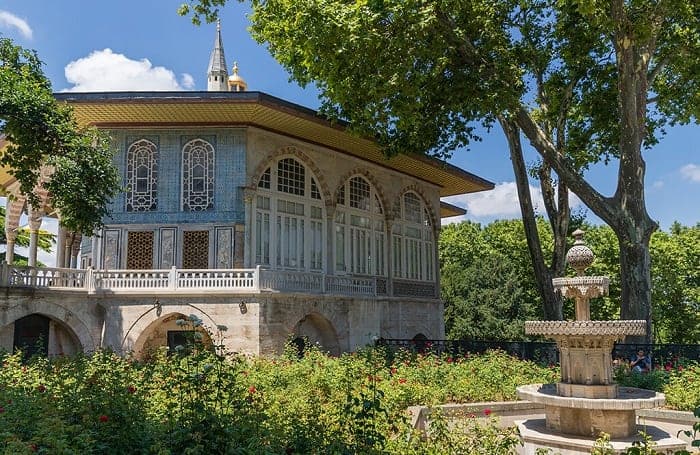
1st Gate and Courtyard
The first gate is called Bab-ı Humayun (Imperial Gate) and the first courtyard is called Alay Meydanı (Cortege Square). The Church Museum “Hagia Eirene” and “Mint Building (Darphane)” are also in this courtyard. Additionaly, the road to the Archaeology Museum and Çinili Köşk goes down from this square.
2nd Gate and Courtyard
This important door is called Bab-us-selam (Gate Of Salutation) and the courtyard is called Divan Meydanı (Square of Council) . This door, which is not in the Ottoman architectural style, was built in Hungarian style after the conquest of Hungary by Suleyman the Magnificent. During the Ottoman era the only person who could enter this courtyard on a horse was the Sultan. On the right hand side of the courtyard, there are the kitchens of the palace and a ticket office and on the left hand side are the Imperial Council (Divan-ı Hümayun) and Imperial Stables (Istabl-i Humayun). In addition, entrance to Harem, the most private section of the palace is from this courtyard. Throughout the history, this courtyard has also witnessed many tragic events.
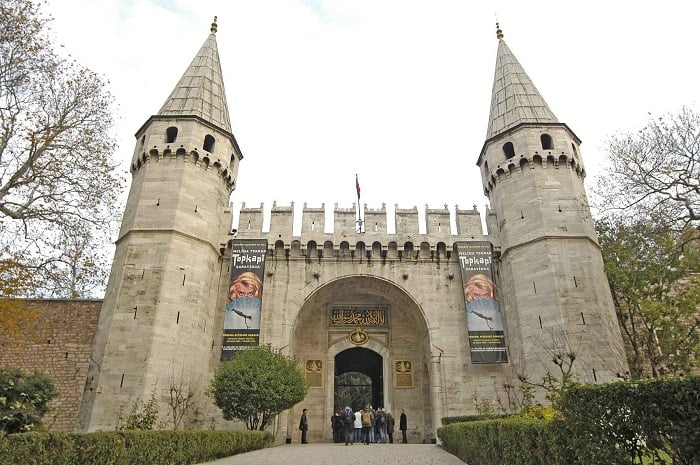
The Tower Of Justice; The Tower of Justice, which overlooks the Topkapi Palace, is the highest structure of the palace. The tower, located in the state’s headquarters, would have given the message that justice is more important than anything else.
Divanı-ı Humayun and Kubbealtı; Divan-ı Humayun (Imperial Council) was the high council where state and public affairs were discussed and decided in the Ottoman Empire. The council was first established in the time of Orhan Bey (1326-1362) and was the equivalent of today’s Council of Ministers. In fact, this council was an advisory council, it has never been a decision-making body, the final decisions always used to made by the sultan. The council, chaired by the sultan, was accompanied by high-level government officials such as grand vizier (prime minister), viziers (ministers),judge of the army, head of treasury, admiral and sheikhulislam. The board would meet 4 days a week (Saturday, Sunday, Monday, Tuesday). Divan-ı Humayun was abolished during the reign of Mahmud II (1808-1839).
This assembly was held in the building called “Divanhane or Kubbealtı” in Divan Square.
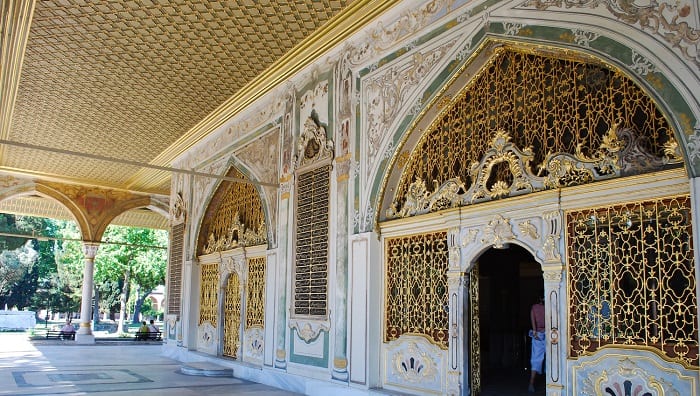
The justice tower; The Tower of Justice, which overlooks to the Topkapi Palace, is the highest structure of the palace. The tower, located in the headquarters of the empire, would have given the message that justice is more important than anything else.
3rd Gate and Courtyard
Babussaade (Gate Of Felicity) is the gate where the ceremonies were helding in front. This is the most important gate in the palace due to the sultans were sitting in front of this door during the ceremonies. It’s also the place where all the important statesman line up during the festive ceremonies, kiss the skirt of the Sultan and receive his tip. Janissarie soldiers would get their tips here as well. After entering Babussaade, it is the Square of Enderun. Enderun is the school where the sultans, princes and those in their service were educated. Harem is also part of these structures and can be handled independently as well. In this courtyard, there are also very important departments of the palace such as Chamber Of Petitions (Arz Odası), Treasury and The Room Of Holy Relics and Imperial School (Enderun).
Chamber Of Petitions / The Audience Chamber (Arz Odası); the intermediate section between the Babussaade Gate and the forbidden 3rd courtyard. This section, which kept the courtyard away from curious gaze, was a meeting place where the sultan met with the members of the Imperial Council (divan-ı hümâyun) and accepted foreign ambassadors. The Ottoman sultans started to sit on the throne in the Chamber Of Petitions from the period of Suleiman the Magnificent and left the tradition of welcoming the foreign ambassadors by standing up.
Enderun; when you enter through the Babussaade Gate, the Enderun School was located inside of the buildings on the right side of the 3.rd Courtyard. Enderun was a palacial academy and a school of politics where the statesmen was trained. Regardless of his race and religion, young people from all over the empire were raised here to take part in the rule of the state rule. Today these buildings are used as part of the museum and exhibitions.
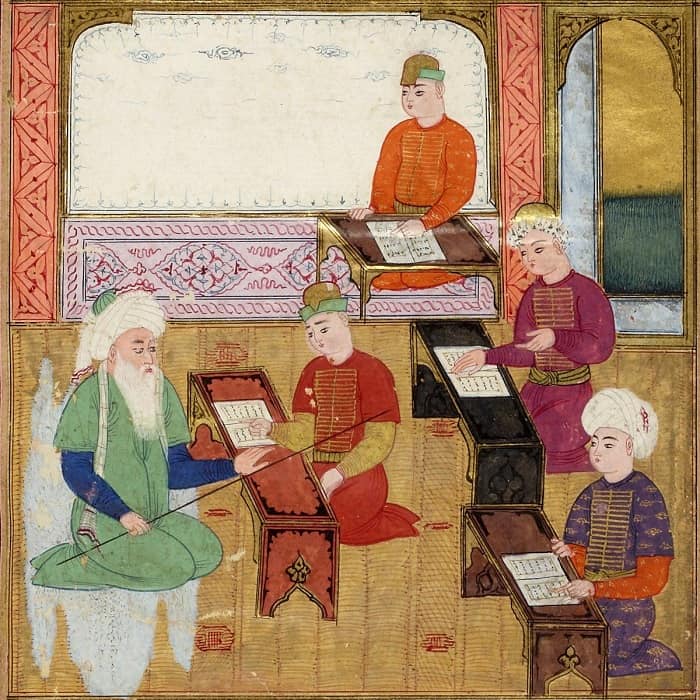
Sacred Relics (Kutsal Emanetler); the priceless pieces of “Sacred Relics” brought to Istanbul after the victory of Ridaniye by Yavuz Sultan Selim in Egypt and brought from Mecca and Medina. The exibition is located in the section Privy Chamber (Has Oda). Has Oda was the place where circumcision and religious ceremonies were held during the Ottoman period. Sme of the most important pieces are; The Blessed Mantle, the seal, the sword and the footprint of Of Prophet Mohammed, the key to the Kaaba, the case of the Holy Black Stone (Hajar-ül Esved), The Sword Of Prophet David and The Stick Of Moses.
The Fourth Courtyard
This is the section that only Ottoman dynasty members, those who serve them and very special guests can enter. In this courtyard there are various pavillions and a terrace overlooking to the Marmara Sea and Bosphorus. The pavilions in the courtyard has some of the finest tile decorations in the palace and each pavillion was built at different periods. The three pavilions are called as Baghdad, Revan, Sofa and Mecidiye. The other structures at the courtyard are the Chamber Of Circumcision, Bower Of Iftaar and Hekimbaşı Tower. Also, do not forget to take a look at “Monument Of Dors” in the garden of the palace.
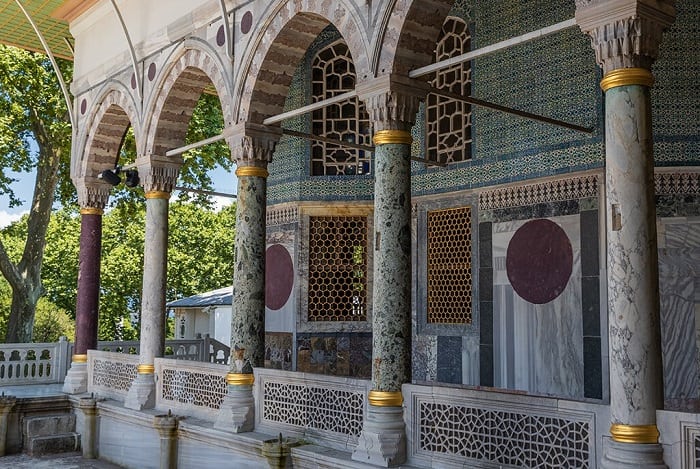
Baghdad Kiosk; this beautiful mansion was in 1638 by the Sultan Murat IV. The name is given as a memory of the conquest of Baghdad in 1638, which was captured by the Safavids in 1624. It is a masterpiece and has an original form of a traditional Turkish kiosk that has survived to the present day. The richness of interior and exterior decoration, the harmony in proportions and the perfection of the traditional decorative arts with different techniques make it one of the masterpieces of Turkish art.
Revan Kiosk; it was built by Sultan Murad IV, on the return of the Revan (Yerevan) Campaign. Although the building was built as a mansion, it was used for different purposes in the later periods. It is architecturally octagonal and has three iwans. The decorations inside the dome belong to the period of Sultan Reshad. Embroideries on iwan ceilings and Edirnekari decorations on wood are among the outstanding examples of the period.
Kiosk Of Sunnah / Circumcision; the kiosk which is located under the same roof with the Chamber Of Blessed Mantle, was built during the reign of Suleiman the Magnificent (16th Century), and took its current form during the reign of Sultan Ibrahim (17th Century). There are three reasons why this small room is called the Circumcision Room. First, circumcision ceremonies of the princes were held here. The second reason was that the sultans joined the community after performing the sunnah (the required) part of the prayer here. For the third reason, sultans would shave their beard (which was also a sunnah / required by Islam) inside of the kiosk. The kiosk is famous with the magnificent decoration of Iznik tiles.
Sofa Kiosk (Mustapha Pasha Pavilion); thiswooden kiosk was built in rococo style in the middle of the 18th century. The kiosk is placed on the walls and consists of two parts. The building is actually a divanhane (a gathering place) that opens to the garden. It consists of two rooms; the “Divanhane” and “Prayer Room” or “Sherbet Room”. Sultans watched sports games and entertainments from this mansion in the lower gardens.
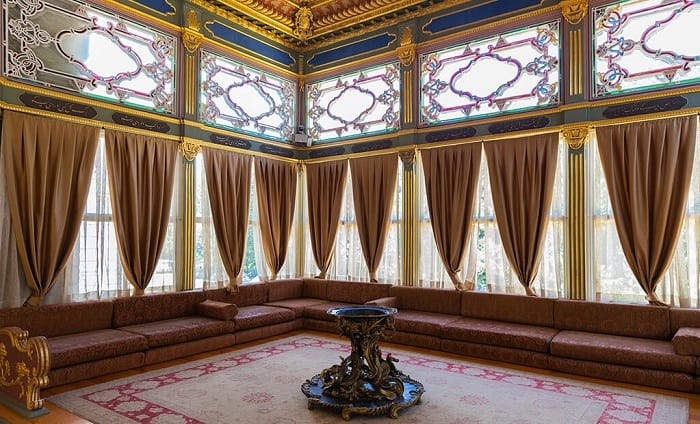
Mecidiye Kiosk; this is the last sultan’s mansion built in Topkapi Palace. In 1859, he was built by Sultan Abdulmecid in imperial style. The Sultan would rest here and welcome his close guests. The mansion has a panoramic view of the Bosphorus and today there is a restaurant inside.
Harem
Harem, a place full of secrets, is actually the private house of the sultan. The family of the sultan (mother, sisters, and wives) lived here along with other people like odalisques, servants, eunuches and “kizlar agasi” the head of eunuches who guard the harem. The harem in Topkapi Palace has approximately 400 rooms (small or larger). The number of people living in the harem would change from time to time. As an example, during the rule of Selim II the population reached up to 1200 people.
Harem was also an educational institution for the women living in the palace. They were having a strict education on topics ranging from music and playing an instrument to sewing, forms of politeness, literature etc. With the help of the world-wide famous Turkish serial “Magnificent Century”, harem is the most curious section of Topkapı Palace. For centuries, this mysterious part of the palace has witnessed countless intrigues and sensational stories.
Harem is used between the 16th and 19th centuries. Different sections built and decorated by different sultans reveal the periods of changes of the Turkish palatial architecture and decoration.
The Imperial Hall (Hünkar Sofrası); Hunkar Sofrasi is the largest hall of the Harem was the place where all the ceremonies such as greetings and gatherings during the feasts were held.The residents of Harem would come together during these ceremonies. In the hall, the sultan sat on one side and the sultan on the other and accepted the congratulations. There are 5 doors of the hall and each were for different people to enter. One was for the mother of the Sultan, one for the sultan, one for the favorite wife of the sultan, one was for the first son of the sultan and one for the mother of this son. On the balcony just above the hall, women used to perform music.
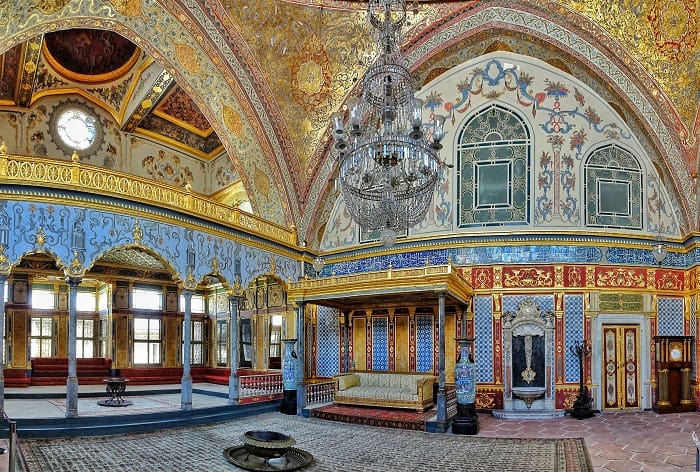
Queens Mother Quarter (Valide Sultan Dairesi); the most effective and competent person of the Harem was the sultan’s mother. As a symbol of the Ottoman Dynasty, mather queens always had great authority and grandeur. For this reason, the most elaborate part of the Harem belonged to her. This is a large section consisting of many rooms from Stonny Ground up to the garden of Harem. In this wide area, all kinds of needs related to daily life were met, guests were welcomed and worshipped.
Valide Sultan’s Apartment consists of three intertwined sections, with a high-domed sofa, a smaller bedroom and prayer room. The only part open to visitors is the sofa section.
